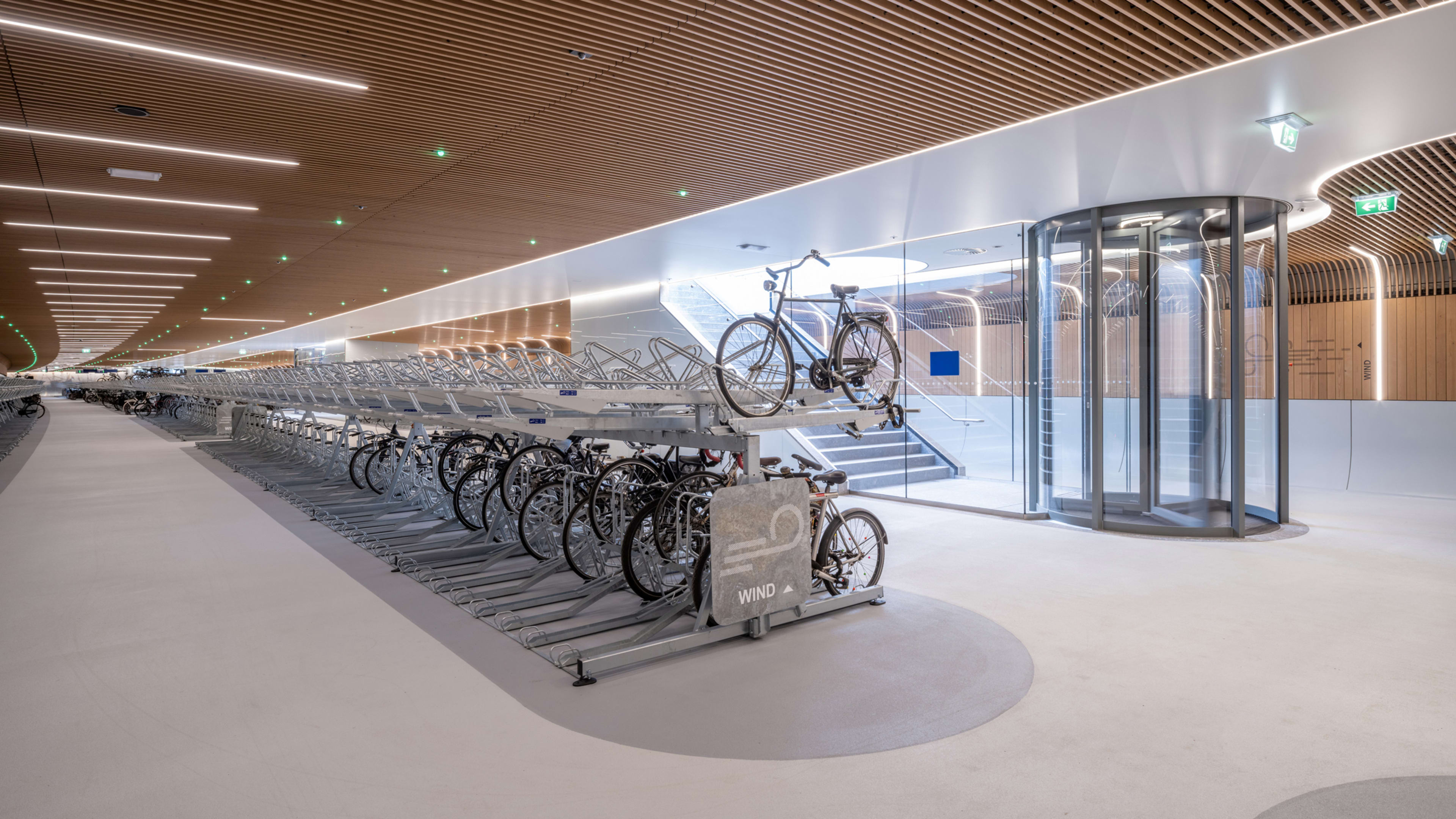If you ride a bike to Amsterdam’s central train station, now you’ll find a convenient parking garage in an unexpected place: underwater. Two gleaming new bike garages sit on either side of the station—one in the river and the other in the harbor—with room for around 11,000 bikes.
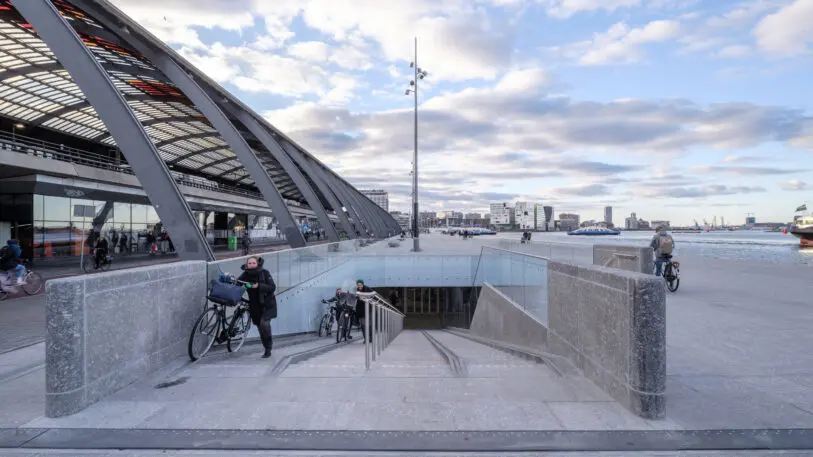
In New York City, by contrast, when the $1.6 billion Moynihan Train Hall opened in 2021, it didn’t have a single bike rack. In the Netherlands, the garages are part of a long effort to make it easier to avoid driving by combining modes of transportation.
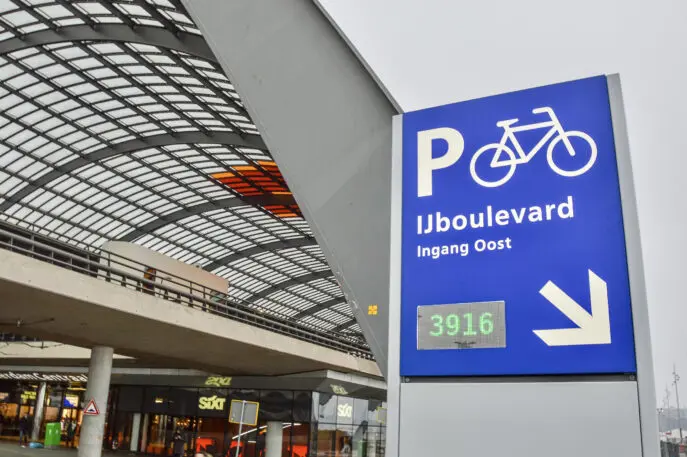
“Cycling to the train station has been a phenomenon that they’ve encouraged for many years, and it’s not an accident—it’s been a deliberate policy decision in terms of the design of the infrastructure,” says Chris Bruntlett, communications manager at the Dutch Cycling Embassy, an organization that helps spread biking solutions from the Netherlands to other countries.
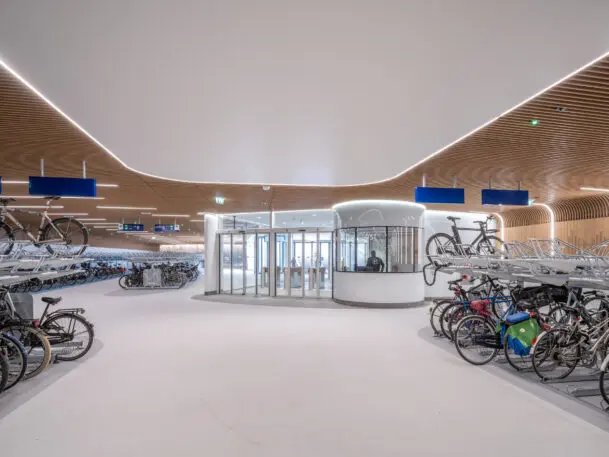
The larger garage, with space for 7,000 bikes, including hundreds of bike-share bikes, took more than a decade to plan and four years to build. A time-lapse video shows the complexity of the engineering:
Commuters use moving walkways to get into the garage, and then use a transit card to enter; the parking is free for 24 hours. Sensors track where the bike racks are in use, and green lights point riders to available spaces. The walls are filled with art. “The architecture itself is a statement of intent,” says Bruntlett. “It’s not just a shed or a garage, it feels almost like a museum. That means the city of Amsterdam values people who cycle.”
In the past, a sea of bikes parked haphazardly outside the train station took up a huge amount of space and still didn’t provide enough room for the number of people who ride to the station. (Of the 200,000 people who pass through Amsterdam Centraal Station each day, around half come by bike.) Having new parking underground “means that lots of space aboveground becomes available for other purposes, such as greenery and benches,” says Geert van der Wilt, a cyclist from Utrecht who recently filmed a visit to the station. The garages also offer bike repair stations, security, and a way to get to the subway or a train underground, so it’s possible to stay dry when it’s raining.

On the other side of the station, the roof of the second new bike parking garage, designed by VenhoevenCS, adds new public space. Underwater, the designers carefully chose materials that could help support marine life. Like the other new garage, it’s also designed to be a beautiful, easy-to-use space.
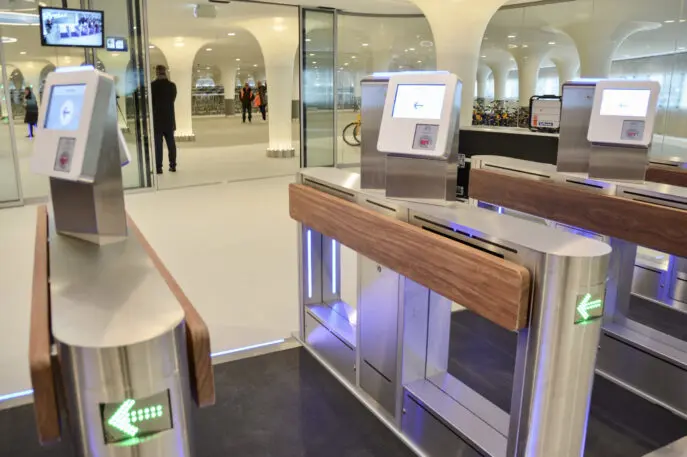
It’s important to think about alternative transportation to work holistically, Bruntlett says. In American cities, the connection between public transit and biking is often an afterthought—a few bikes might be allowed on the front of a bus or on a subway car. In the Netherlands, with so many bikes in use, they can’t fit on trains. But offering enough parking at each train station, and a connection to shared bikes at the other end, means that both the trains are accessible to more people and more people end up biking each day.
“If it’s systematically and thoughtfully planned,” Bruntlett says, “then we can provide the door-to-door convenience of a car over longer and longer distances.”
Recognize your brand’s excellence by applying to this year’s Brands That Matter Awards before the early-rate deadline, May 3.
